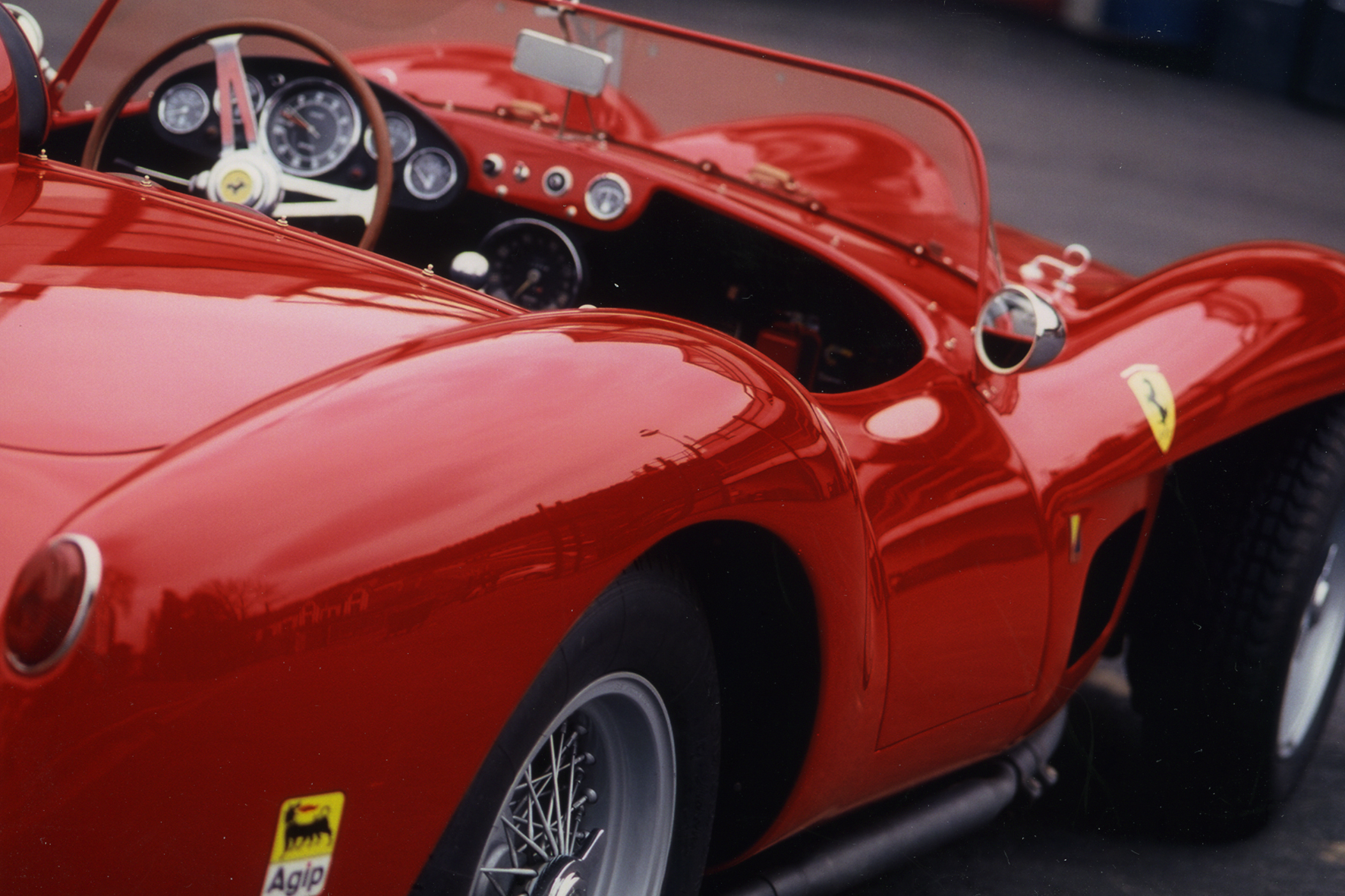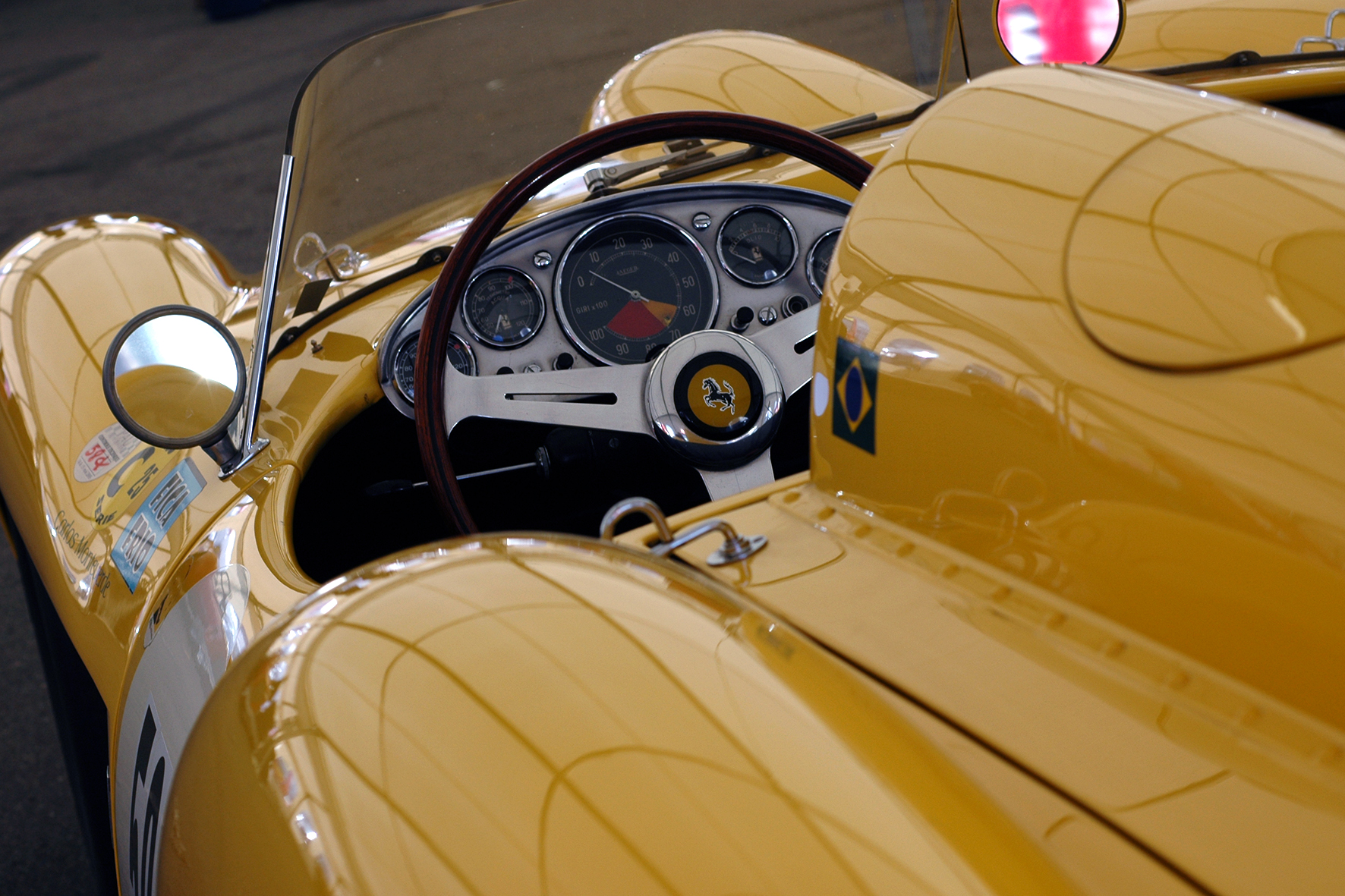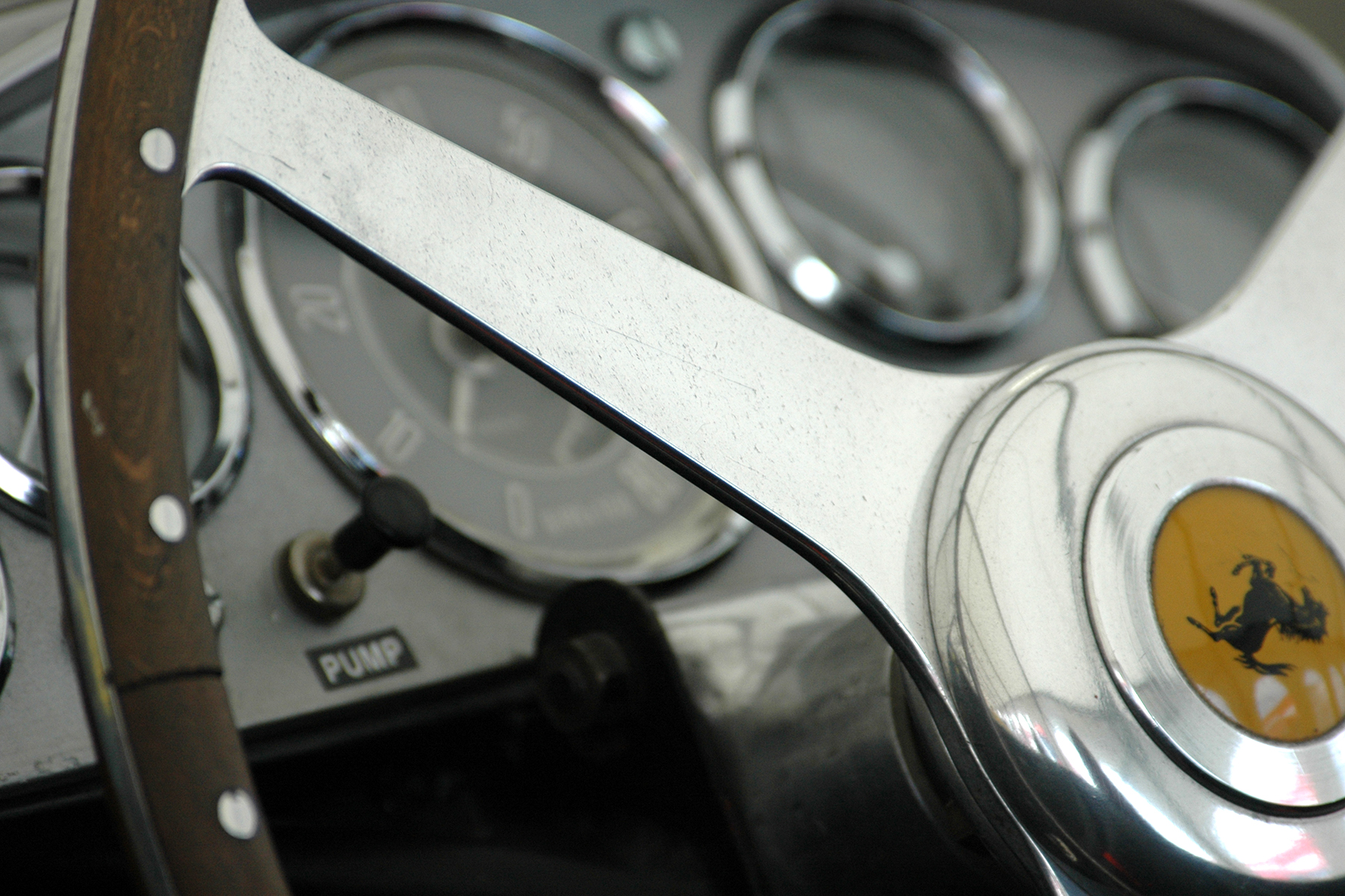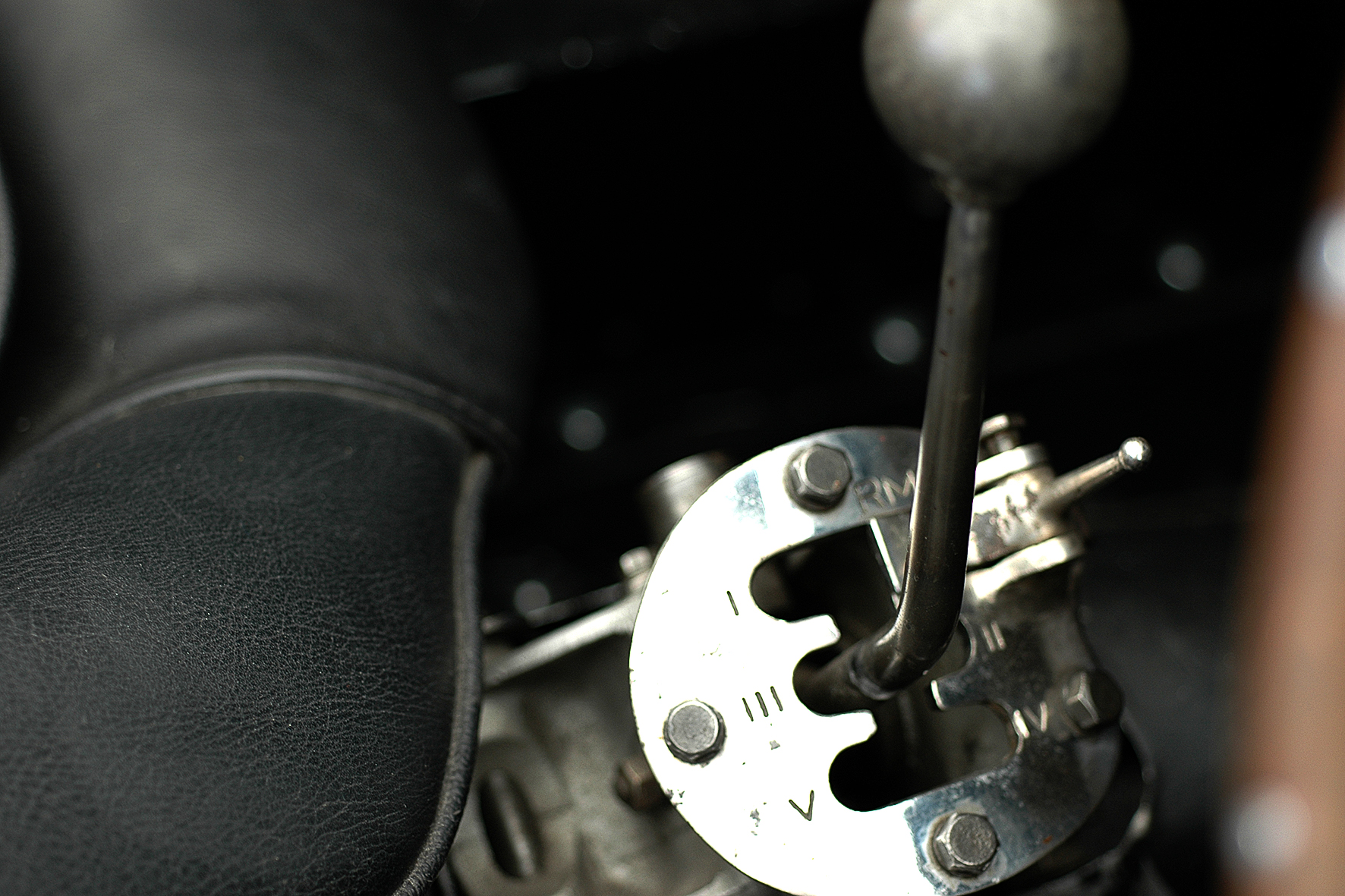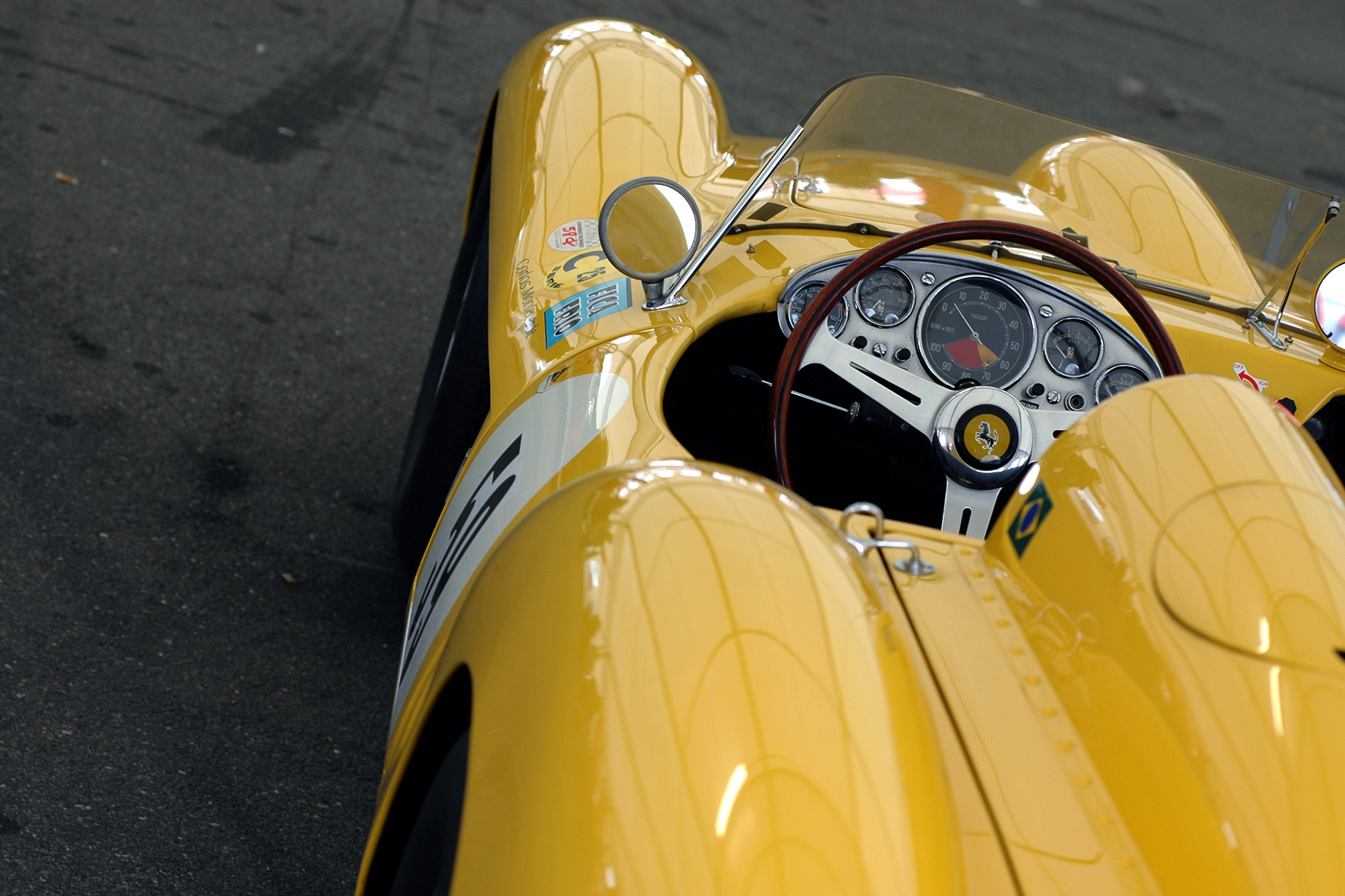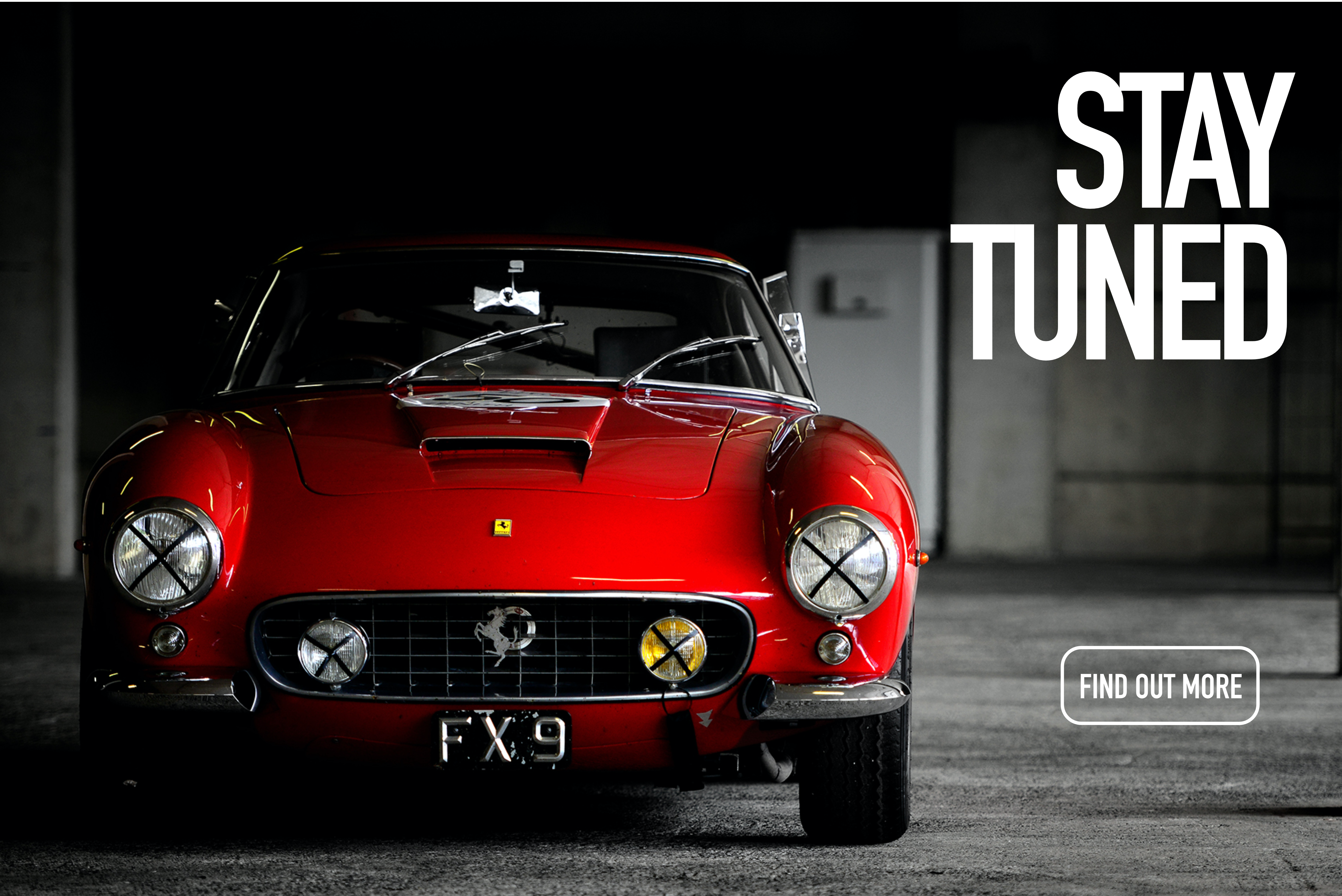Testarossa – the red head: The 250 Testarossa was planned to give the customers, who were driving the 500 TRC at races, a more powerful car. The very good driving balance and handling of the TRC was obtained but the engine was much more stronger.
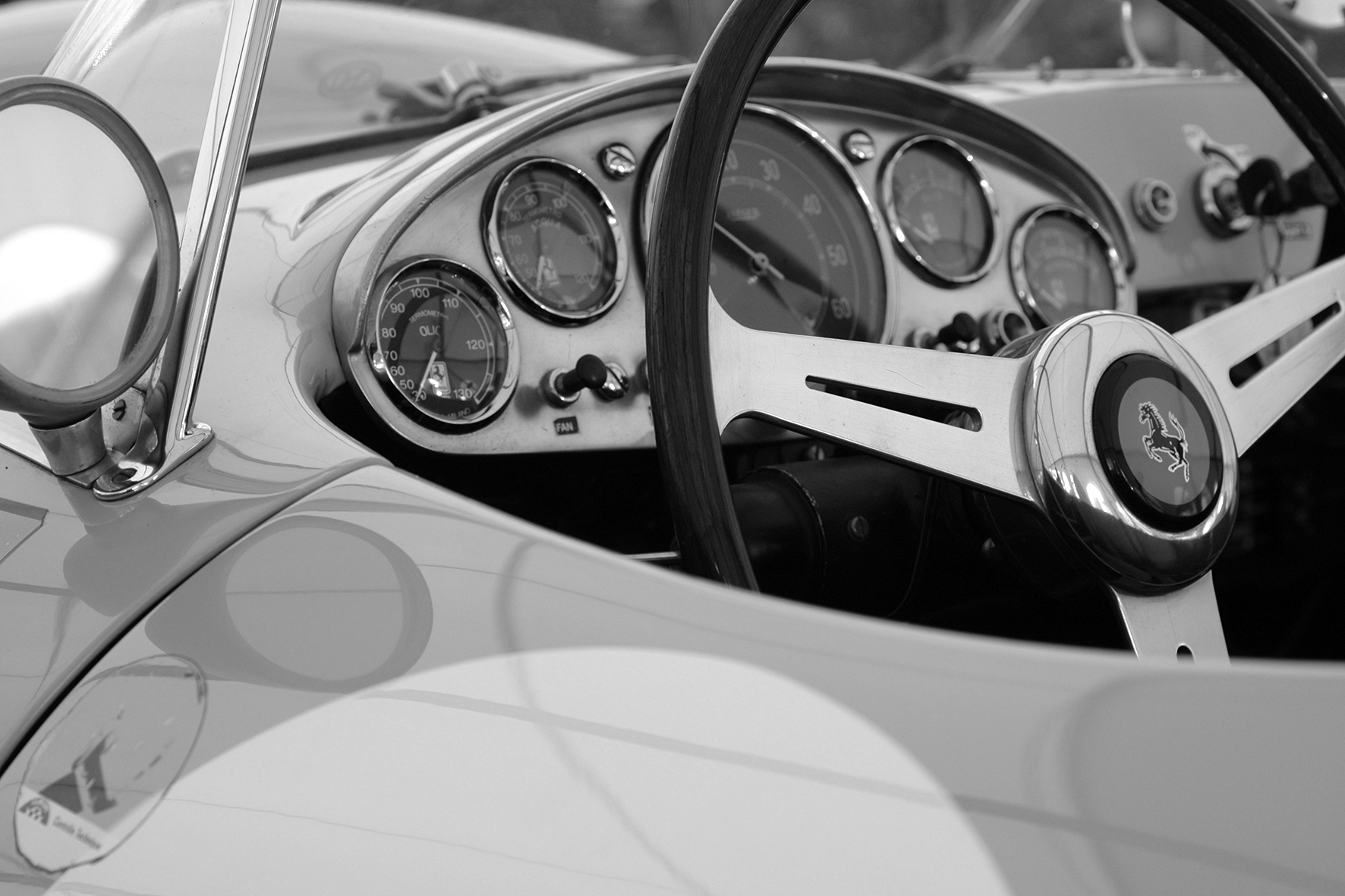
The FIA would change the regulations for the year 1958 to set a limit of 3-litre prototype engines. So Ferrari decides to use the well known and very reliable V12 engine of the 250 Gran Turismo by using a bigger bore and stroke and six Weber carburetors.
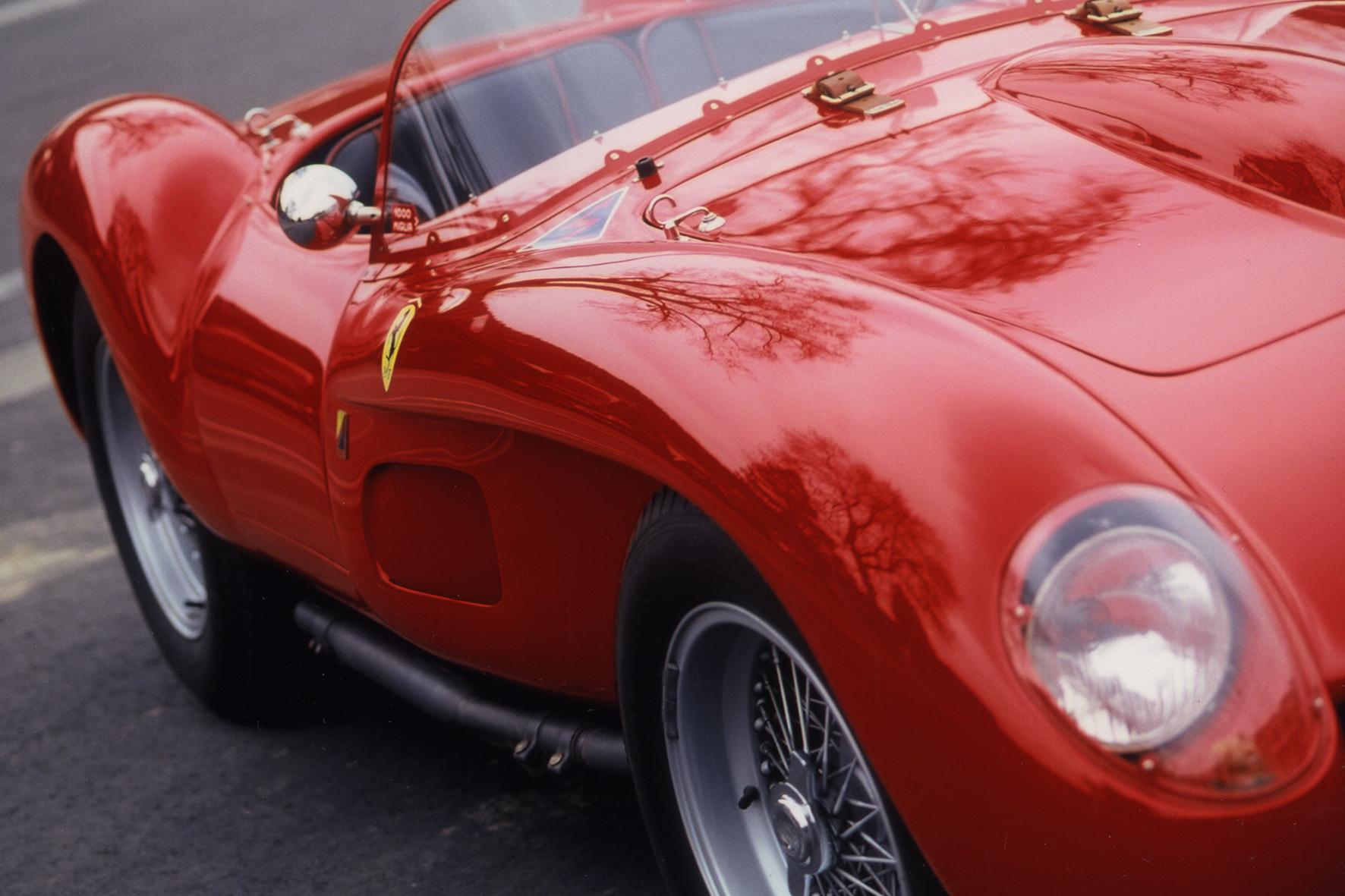
The spectacular body shape and the strong 3-litre engine made the car the state of art for this time. Lets talk about the real unique body work of the Testarossa. Some curves look even more attractive when they are red …

The hand built aluminium fenders by the Scaglietti factory create a wild curve and are the key element to make this beautiful racer a real piece of art. Even today after all these years the Ferrari 250 Testarossa is one of the most unique and sexy Ferraris ever.

But not only the design was unique, the Testarossa was very successful over the whole time of being entered at the famous races of the World Championship in these days. The Testarossa was in the right hands of the most talented drivers of these times nearly unbeatable at places like the Nürburgring, Le Mans, Sebring or the Targa Florio.
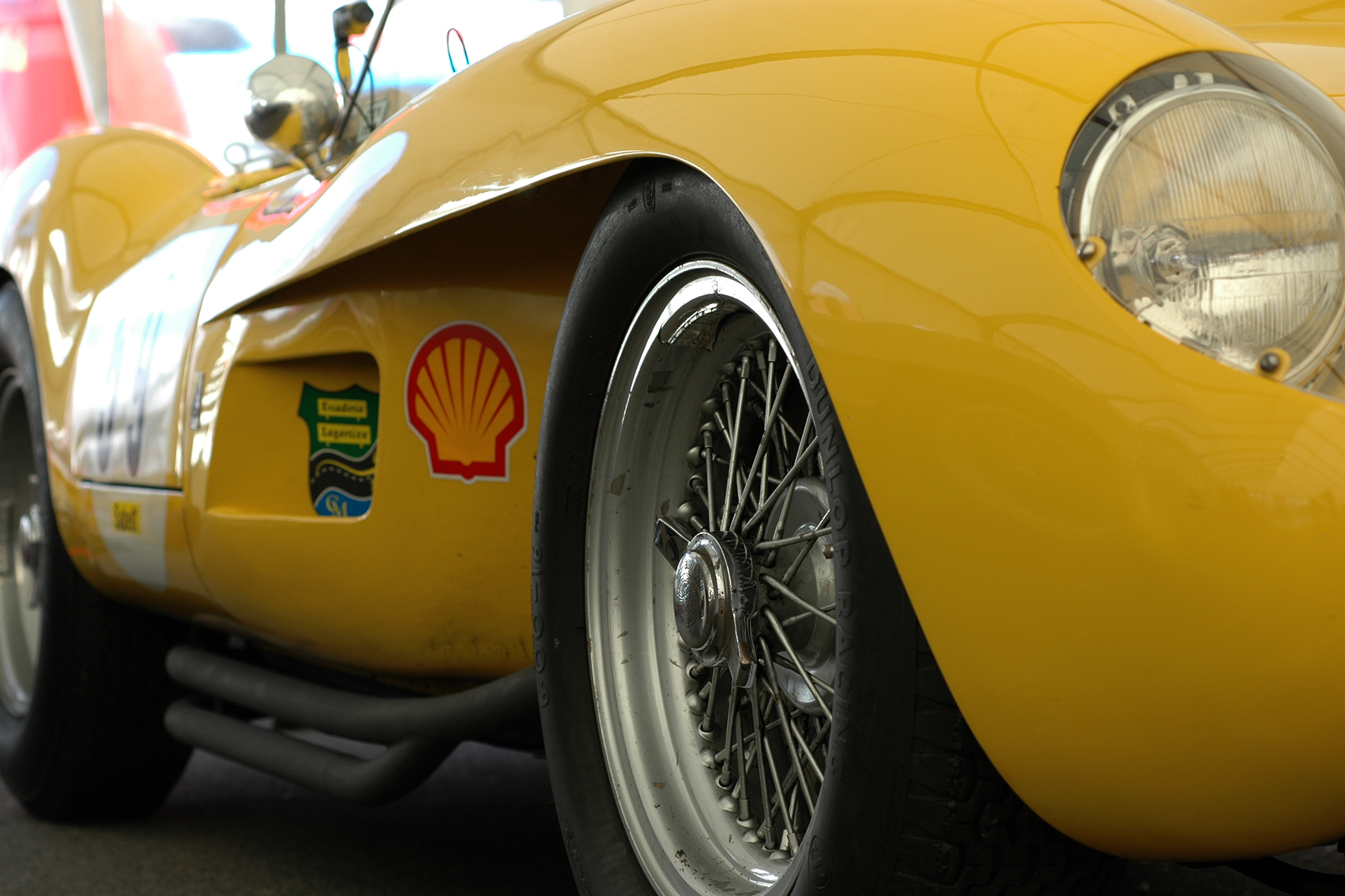
Great drivers like Phil Hill, Olivier Gendebien, Mike Hawthorn, Peter Collins, Wolfgang Graf Berghe von Trips, Piero Drogo, Willy Mairesse, Lucien Bianchi, Luigi Musso and a lot more showed their talent with the Ferrari 250 Testarossa. Phil Hill alongside with Peter Collins won the first two races in 1958 at Argentina and Sebring, Luigi Musso alongside with Olivier Gendebien won the Targa Florio, and Hill / Gendbien was the winning team at the 1958 issue of the 24 Hours of Le Mans in June. Only the 1000 km race at the Nürburgring did not see a Ferrari on the first place, Hawthorn / Collins scored only the second place.
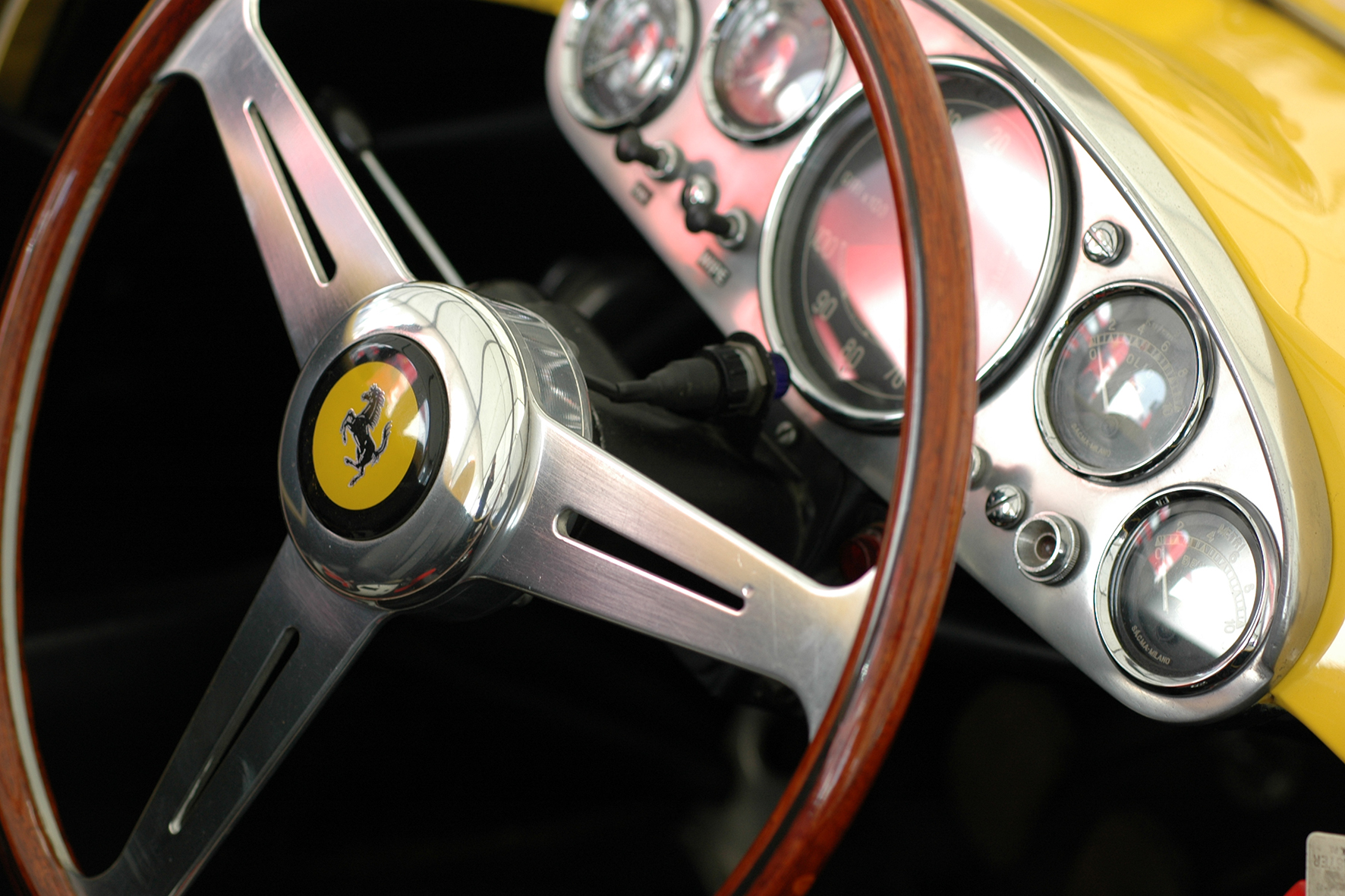
So, the 1958 World Championship went to Ferrari by scoring a total of 38 points, and it was very important for Enzo Ferrari and his Scuderia. In 1959 the Championship went to Aston Martin, but the 1960 Championship was won again by the Suderia Ferrari with two overall winnings in Argentina and again at Le Mans with Gendebien / Freré at the wheel. Even the 1961 World Championship was going to Ferrari by scoring 34 points and once again a victory at Le Mans with Phil Hill and Olivier Gendebien.
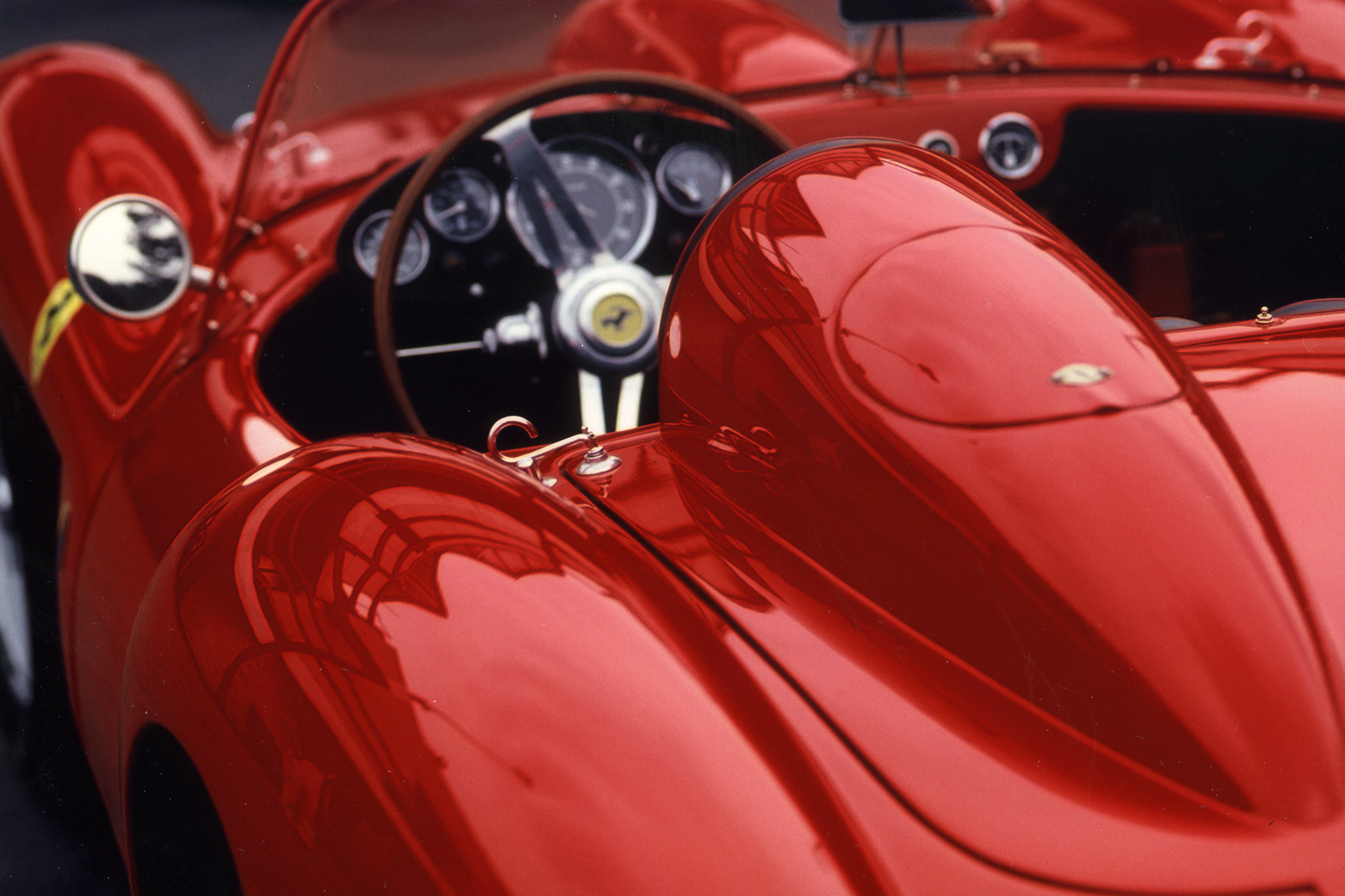
For me the Ferrari 250 Testarossa is one of the most beautiful Ferraris ever, very unique in its body shape, it looks brutal , fast and sexy, even today. Sadly this fabulous car doesn’t appear often in public, the few existing cars are in private collections all over the world. But thats the way it goes today, because of the monetary value of these old beautiful Ferraris. I think that’s a shame , because the cars were built to race and not to be hidden in private places. Find out more about our photographer Ralph Lüker.
TECHNICAL SPECIFICATION: Ferrari 250 Testarossa
MODEL 250 Testarossa
TYPE Spider
YEAR OF PRODUCTION 1957 – 1961
ENGINE V12 60˚ front, longitudinal
BORE AND STROKE 73 mm x 58,8 mm
CUBIC CAPACITY CYL. / TOTAL 246,10 cc / 2953,21 cc
VALVE TRAIN Twin overhead cams craft per bank, two valves per cylinder
FUEL FEED six Weber 38 DCN carburetors
LUBICATION wet sump
TRANSMISSION four-speed + reverse manual
HORSEPOWER 300 bhp at 7200 rpm
CHASSIS steel tubular frame
BODYWORK aluminium
BRAKES drum brakes all around
STEERING. worm and sector
SUSPENSION FRONT independent, double wishbones, coil springs, hydraulic shock absorbers
SUSPENSION REAR live axle, radius arms, coil springs, hydraulic shock absorbers
WHEELBASE 2350 mm
LENGTH 4178 mm
WIDTH 1549 mm
HEIGHT 1013 mm
TRACK FRONT / REAR 1308 mm / 1300 mm
WEIGHT WITHOUT FUEL 800 kg
TYRES FRONT / REAR 5.50 x 16 / 6.00 x 16
FUEL CAPACITY capacity 140 litres
TOP SPEED 270 km/h

